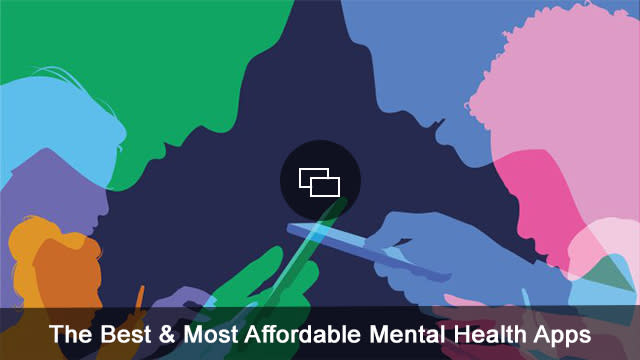Busy Philipps Shares Her 5-Minute Re-Grounding Tip for Anxious Moments: ‘It’s Been Very Helpful'

- Oops!Something went wrong.Please try again later.
Busy Philipps first realized she had ADHD when she took her daughter, Birdie, to get tested for the condition. As the doctor went through a checklist of symptoms, Philipps found herself ticking off the boxes in her own head — and realizing just how many symptoms she herself had. “Every single thing on the checklist, I was like, ‘Yep, the most. The most. All all the time,'” Philipps tells SheKnows.
When the Girls 5eva star went to her own doctor, she learned her experience wasn’t unusual. “He said, ‘I have to tell you, you’re not the first mom that I’ve had come in here who, after receiving a diagnosis for their kid, has realized, well, wait, that actually sounds a lot like my experience,'” Philipps remembered. Her own podcasts listeners have said the same thing. “So many people my age reach out, and they’re like, ‘Yes, that’s exactly what happened to me.'” The stories back up the stats showing that more women are being diagnosed with ADHD, and are a testament to the fact that ADHD often presents differently in women and girls, which kept diagnoses down for decades.
More from SheKnows
After leaving the appointment with her own diagnosis of ADHD, Philipps realized it was actually a re-diagnosis; Philipps had been diagnosed back in third grade, according to a forgotten medical record her mother dug up. Philipps doesn’t blame her parents for not pursuing treatments when she was a child — “it was a relatively new diagnosis and they… obviously did not have the capabilities or the pharmaceuticals they do now,” she says — but she says it would’ve been nice to know.
“I do wish that I had sort of been aware earlier in my life, especially in my early 30s,” Philipps says. Though she had her own coping mechanisms, she remembers her symptoms “really became overwhelming” when she became a parent and “started to deeply affect my self-esteem.” In retrospect, she now knows she was “a highly productive person living with ADHD,” but she was “constantly working so much harder to keep it going, and it was exhausting me and making me feel terrible, all the time.”
These days, part of Philipps’ treatment plan includes a non-stimulant medication, Qelbree, which the actress likes because she can take it at any time of day and it doesn’t mess with her sleep; Philipps recently partnered with the brand as well. The difference in her symptoms since getting diagnosed and starting treatment has been major.
“I’m able to prioritize things better and able to work through ideas that I have, and organize which ones are actually worth pursuing and which ones I can let go off, which is a huge deal for people with ADHD,” Philipps explains. “I’m able to get out the door in under 10 minutes. I don’t double book things anymore.”
She and Birdie are also similar in how they experience ADHD, a fact that’s helped Philipps understand how to help her daughter through symptoms. Philipps, for example, has to “physically write things down” to remember them, she says. Tapping them into her Notes app doesn’t work — it’s got to be pen to paper. With so much of school being online now, Philipps realized her daughter might be having a similar struggle with retaining information through a screen and worked with the school to make accommodations. “We’re both super visual learners,” she explained. “I literally was like, ‘We just need to write it down.'”
For Philipps herself, keeping an eye on her mental health while parenting two daughters and keeping up a career in the entertainment industry isn’t always easy. Exercise has helped. Meditation too, which she knows is “so annoying [to say] — like the most beautiful woman in world saying, ‘I was really a nerd growing up!’ But it’s true… it just resets me in a really great way.”
There’s one quick mindfulness practice Philipps says she’s been loving lately is to ground herself. It’s basically “taking five minutes to like, get your [bare] feet firmly on the ground,” she explains. “And feeling all of your bones and ligaments, really re-grounding your feet… It’s been very helpful to me.”
Like so many other mental health coping mechanisms, it’s simple but effective. We get caught up in our daily stresses, our endless to-do list, all the things we should be doing and the places we need to be, and we somehow leave our body behind. “Your head is just spinning. It’s just going and going and going,” Philipps says. “And in your core, you can sort of reconnect with the fact that you know that everything ebbs and flows, you know that it’s going to be OK. And you don’t let your intellect get away from you in telling you these bad stories.”
Whether it’s physical movement, meditation, medication, or a quick grounding practice, if it works, it’s worth it. It all comes back to the biggest lesson Philipps imparts: making sure you and your mental health are always top of mind, no matter how busy life gets. “You just have to make it a priority,” Philipps says. “You just have to consider it a non-negotiable.”
Before you go, check out our favorite mental health apps:
Best of SheKnows
Sign up for SheKnows' Newsletter. For the latest news, follow us on Facebook, Twitter, and Instagram.


